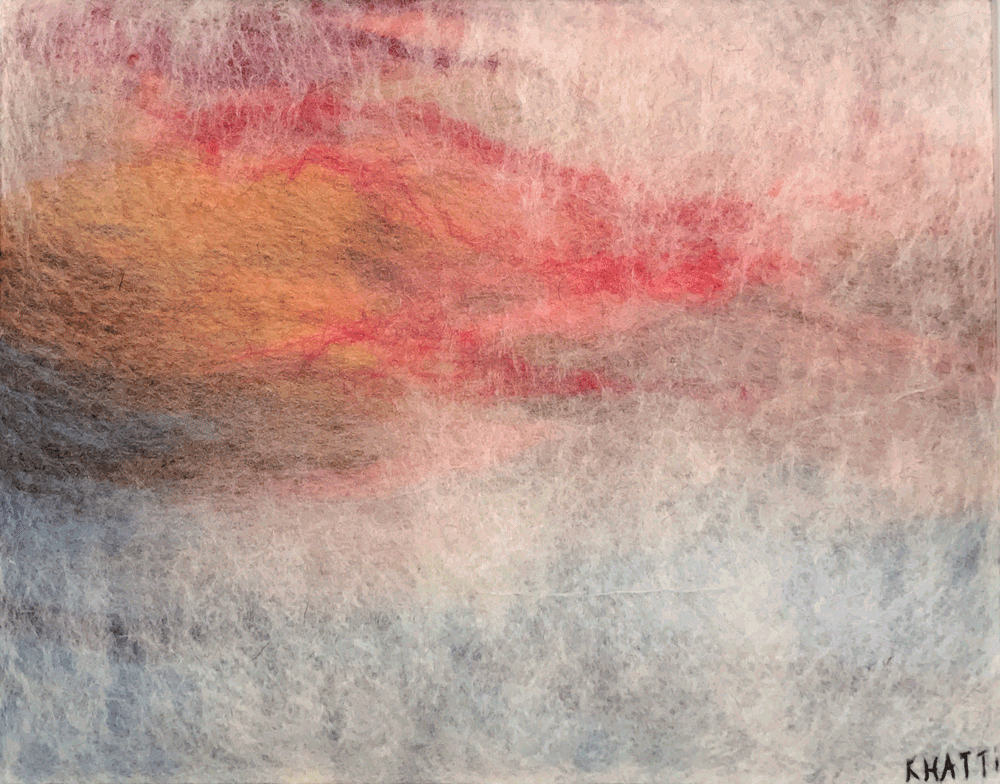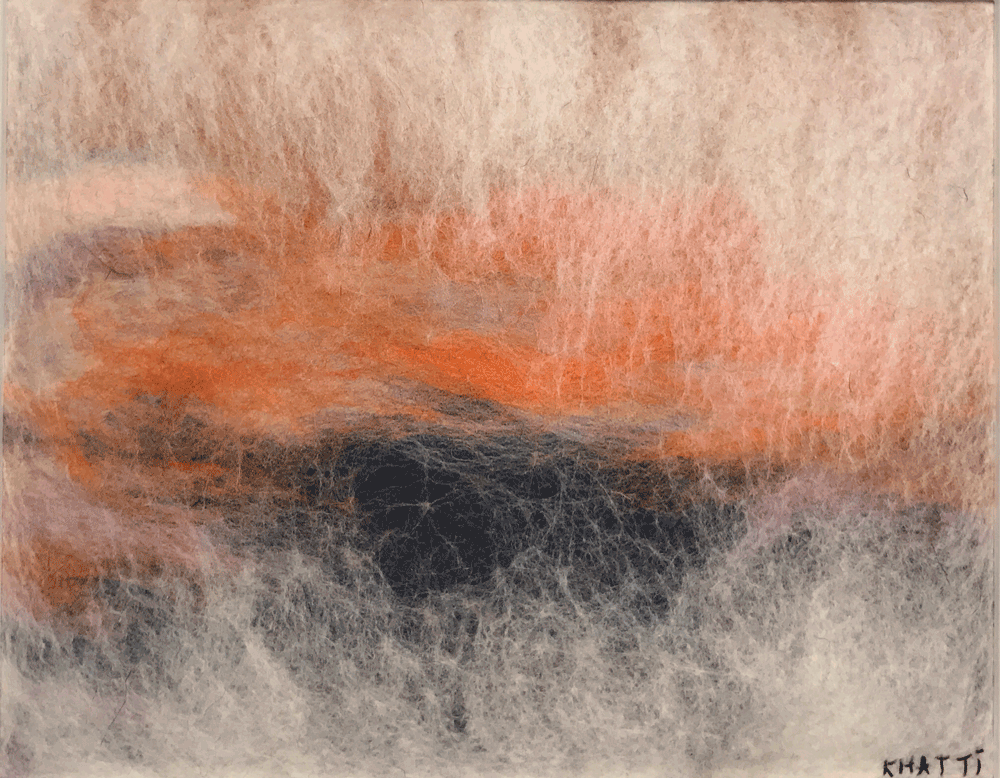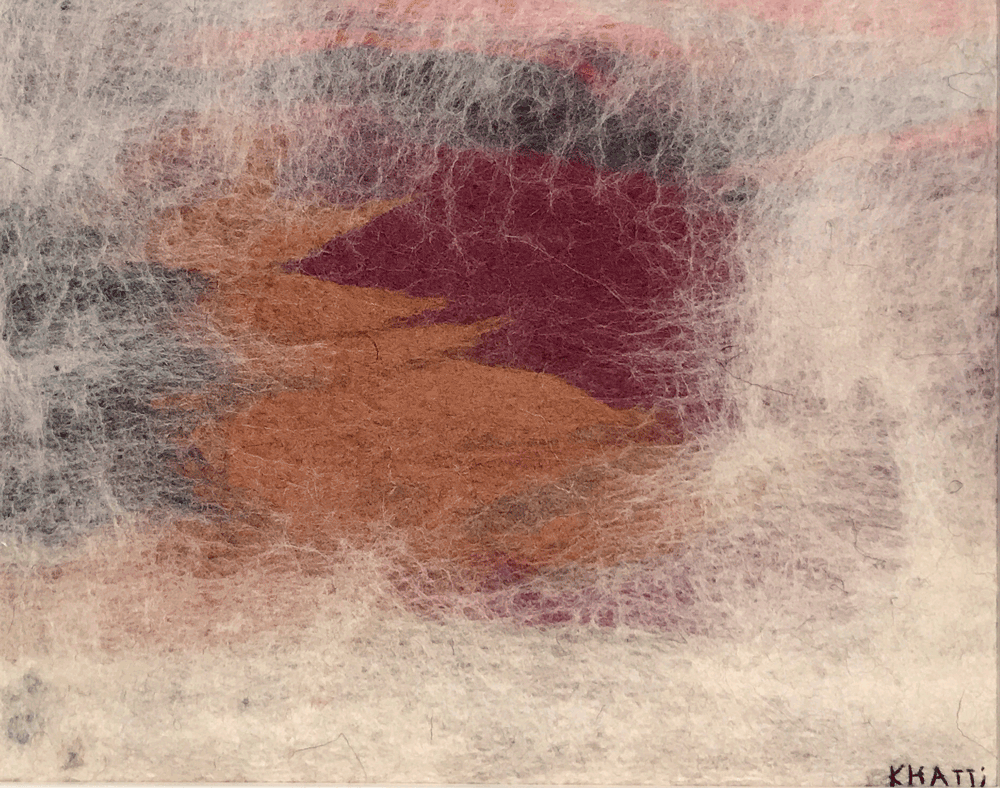
While a student at the Rhode Island School of Design, Sonali Khatti studied textile design and experimented with felting, a process of beating wool. Later, she decided to pursue fine art and has been making felted-wool paintings ever since. Here, she describes her artistic process and what inspires her most about landscapes.
“I’ve always been a process-based artist. Felting is the most incredible process, because it requires nothing but the use of your hands, some soap, and water. It’s simple, and it’s ancient. I love history—nomads accidentally created this process in prehistoric times. The story goes that a traveller was herding sheep when she had pain in her feet. She put tufted wool between her feet and her moccasin. After walking and sweating, the wool compressed into a piece of felt. That’s how the history of felting began.
I do consider my art contemporary. As a textile designer in art school, I dealt with the fact that it’s hard to modernize the idea of fiber and make it relevant in today’s art world. That is my mission: to take this ancient process that has long been considered women’s work and to shed some new light on it, and give it a new twist. It’s frustrating, too, that when a man works cloth, it’s seen as something new. Women have been doing it forever. My hope is for people to look at my paintings—because I do consider them paintings—and not really know what they’re made of. The second you know it’s wool or felt, the works risk taking on a negative connotation and being misunderstood. So I’m trying to work on the idea of people not understanding what they’re looking at until they’re drawn in.
It’s an intuitive process: I take the wool roving, lay it out by color, and compose a picture. I consider the colored roving my paint, and I make a canvas. It’s almost a backwards process—the canvas comes out of the tufts of paint, so to speak, and oftentimes I’ll embellish on top afterwards. There’s a lot of texture; it’s this layering process. I’ve always been interested in the registration of time, and what people can see and what people can’t see. What one person may notice, another may not. That’s how I approach nature—I am always excited about what I can find, and what someone else might not have found, on the same nature walk. It’s this idea that there are many different perspectives in one piece.
I love the national parks. I went as a small child to the Grand Canyon, and I remember driving out there with my family. To revisit the park 40 years later, to see what you remember from before and what you remember now, and how it all comes together… for me, it was the hikes and the light—just this incredible sensation of light and openness and awe. The pieces from this series are small. They’re little postcard images, some of my smallest, actually—it’s funny to do the Grand Canyon on a small scale. I do think everything you experience—if you stop and are present and mindful in that moment—becomes a part of you. Part of being out in nature is about being mindful and experiencing the here and now, then cultivating those moments.”



